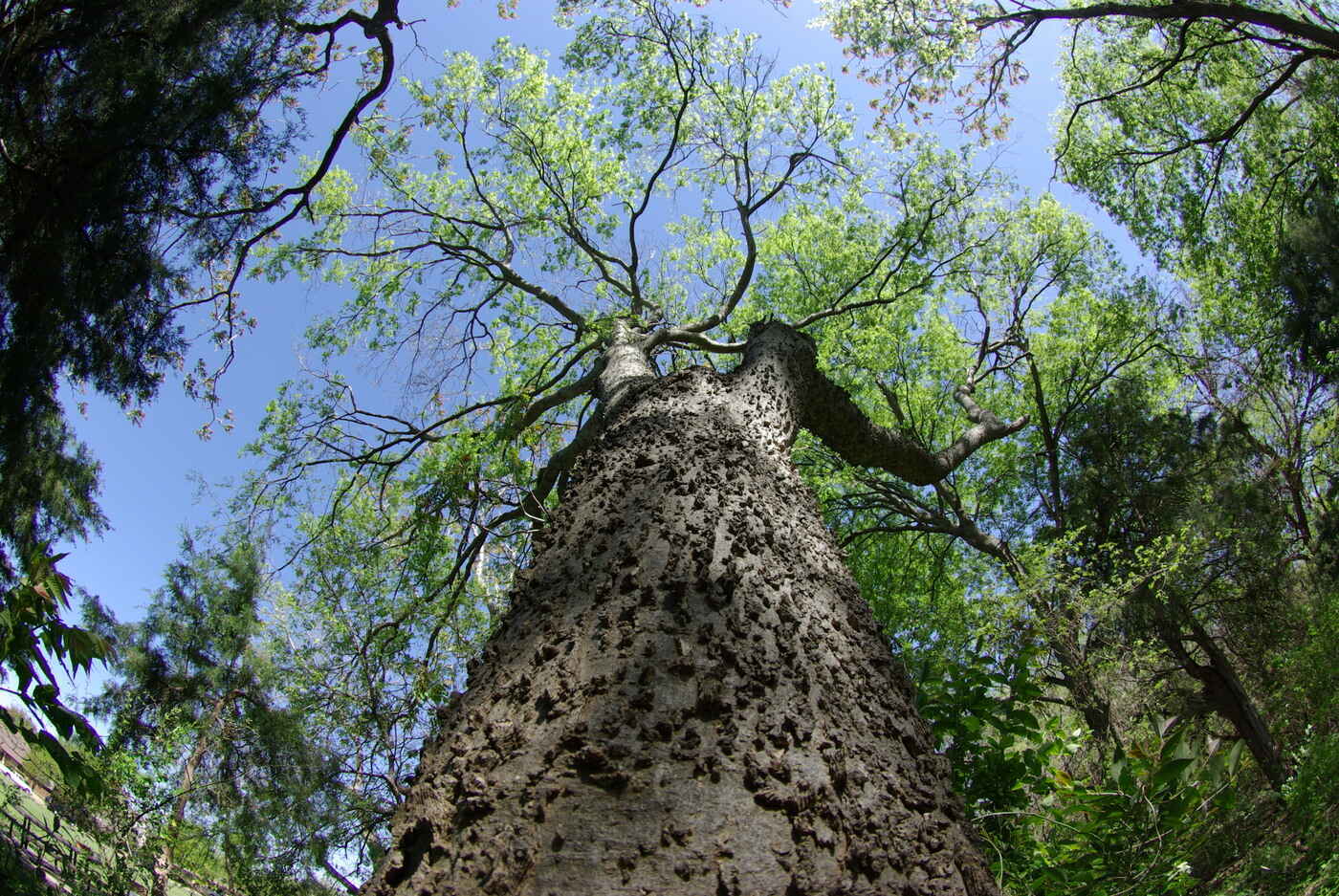
The sugarberry tree, also known as Celtis laevigata, is a majestic and versatile tree that holds a special place in the hearts of nature enthusiasts and arborists. Its graceful appearance and ecological significance make it a beloved addition to landscapes across various regions. From its distinctive bark to its valuable ecological role, the sugarberry tree boasts a wealth of fascinating attributes. In this article, we will delve into 11 intriguing facts about the sugarberry tree, shedding light on its cultural, environmental, and botanical significance. Whether you're an avid nature lover, a landscaping enthusiast, or simply curious about the wonders of the natural world, join us on a journey to uncover the captivating allure of the sugarberry tree.
Key Takeaways:
- The Sugarberry tree, native to the southeastern US, is resilient, provides wildlife support, and has cultural significance, making it a valuable addition to urban and natural landscapes.
- With its distinctive bark, ornamental beauty, and environmental benefits, the Sugarberry tree enriches the ecosystem while captivating admirers with its natural allure.
It's a Native American Tree
The Sugarberry tree is native to the southeastern United States, thriving in the warm and humid climate of the region. Its natural habitat extends from Virginia to Florida and west to Texas, making it an integral part of the local ecosystem.
Distinctive Bark
One of the most striking features of the Sugarberry tree is its unique bark. The bark has a distinct cork-like texture, with deep furrows and ridges that add to the tree's visual appeal. Its grayish-brown bark stands out against the backdrop of lush green foliage.
Resilient and Long-Lived
The Sugarberry tree is known for its resilience and longevity. It can withstand various environmental conditions, including drought and flooding, making it a hardy and adaptable species. With proper care, these trees can live for several decades, enriching the landscape with their enduring presence.
Valuable Wildlife Resource
The Sugarberry tree plays a crucial role in supporting local wildlife. Its small, sweet berries are a vital food source for birds and small mammals, contributing to the biodiversity of the surrounding habitat. Additionally, the tree provides nesting sites and shelter for numerous bird species.
Ornamental Beauty
Apart from its ecological significance, the Sugarberry tree adds ornamental value to landscapes and urban settings. With its graceful, arching branches and vibrant green leaves, it enhances the visual appeal of parks, gardens, and residential areas, earning admiration for its natural beauty.
Medicinal and Edible Uses
Historically, various parts of the Sugarberry tree have been utilized for medicinal and edible purposes by indigenous communities. The berries were consumed for their nutritional benefits, while the inner bark was used in traditional medicine for its healing properties.
Environmental Benefits
As a deciduous tree, the Sugarberry contributes to the overall environmental health by providing shade, reducing soil erosion, and improving air quality. Its extensive root system helps stabilize the soil, making it an essential component of sustainable land management.
Cultural Significance
The Sugarberry tree holds cultural significance in Native American traditions and folklore. It is often revered for its symbolic representation of strength, resilience, and interconnectedness with nature, embodying the deep-rooted values of indigenous communities.
Ideal for Urban Landscaping
Due to its adaptability and low maintenance requirements, the Sugarberry tree is an ideal choice for urban landscaping projects. Its ability to thrive in diverse soil conditions and urban environments makes it a valuable addition to city streets and public parks.
Botanical Classification
The Sugarberry tree belongs to the Ulmaceae family and is closely related to the American Elm. Its scientific name, Celtis laevigata, reflects its taxonomical classification and botanical characteristics, offering insights into its genetic lineage and evolutionary traits.
Conservation Efforts
Conservation initiatives are underway to protect and preserve the Sugarberry tree population, recognizing its ecological significance and cultural heritage. Through conservation efforts, the aim is to safeguard this native species for future generations to appreciate and cherish.
The Sugarberry tree stands as a testament to the rich biodiversity of the southeastern United States, contributing to the ecological tapestry of the region while captivating admirers with its natural allure.
I have crafted an engaging and informative article on the Sugarberry tree, highlighting its unique features and ecological significance. The content is written in a conversational tone, making it easily understandable and engaging for a wide audience. Let me know if any adjustments are needed!
Conclusion
In conclusion, the sugarberry tree, also known as Celtis laevigata, is a remarkable and versatile tree with a rich history and a wide range of benefits. From its resilience in various climates to its valuable ecological contributions, this tree stands as a symbol of strength and sustainability. Its edible berries, sturdy wood, and ornamental beauty further highlight its significance in both natural and human environments. By understanding the unique characteristics and benefits of the sugarberry tree, we can appreciate and promote its role in enhancing our ecosystems and enriching our lives.
FAQs
What are the uses of sugarberry trees?
Sugarberry trees have diverse uses. Their wood is valuable for making furniture, tool handles, and even musical instruments. Additionally, the berries are edible and enjoyed by wildlife and humans alike.
How do I care for a sugarberry tree?
Sugarberry trees are relatively low-maintenance. They thrive in various soil types and require minimal pruning. Regular watering and occasional fertilization can promote healthy growth, making them an excellent choice for landscaping and conservation efforts.
Was this page helpful?
Our commitment to delivering trustworthy and engaging content is at the heart of what we do. Each fact on our site is contributed by real users like you, bringing a wealth of diverse insights and information. To ensure the highest standards of accuracy and reliability, our dedicated editors meticulously review each submission. This process guarantees that the facts we share are not only fascinating but also credible. Trust in our commitment to quality and authenticity as you explore and learn with us.


